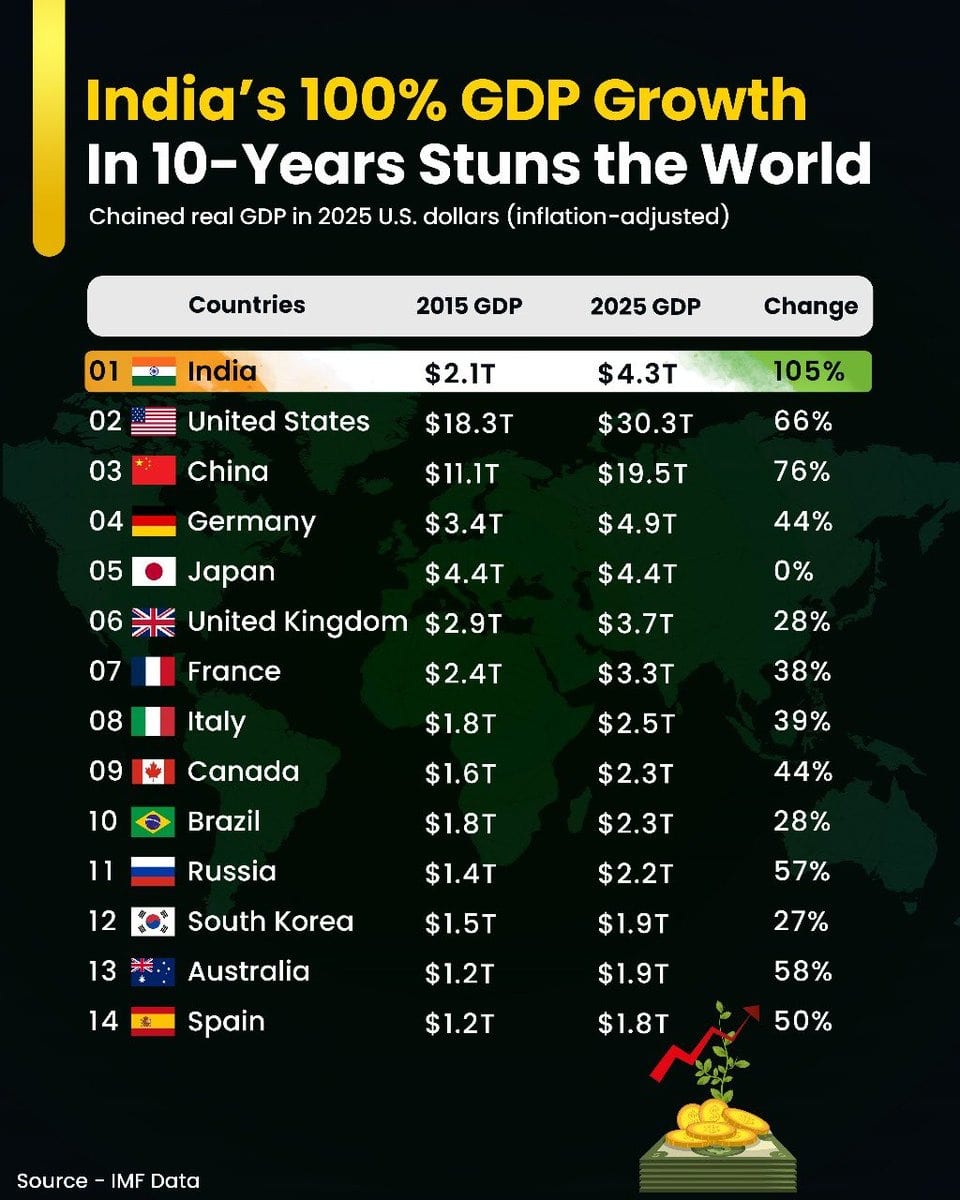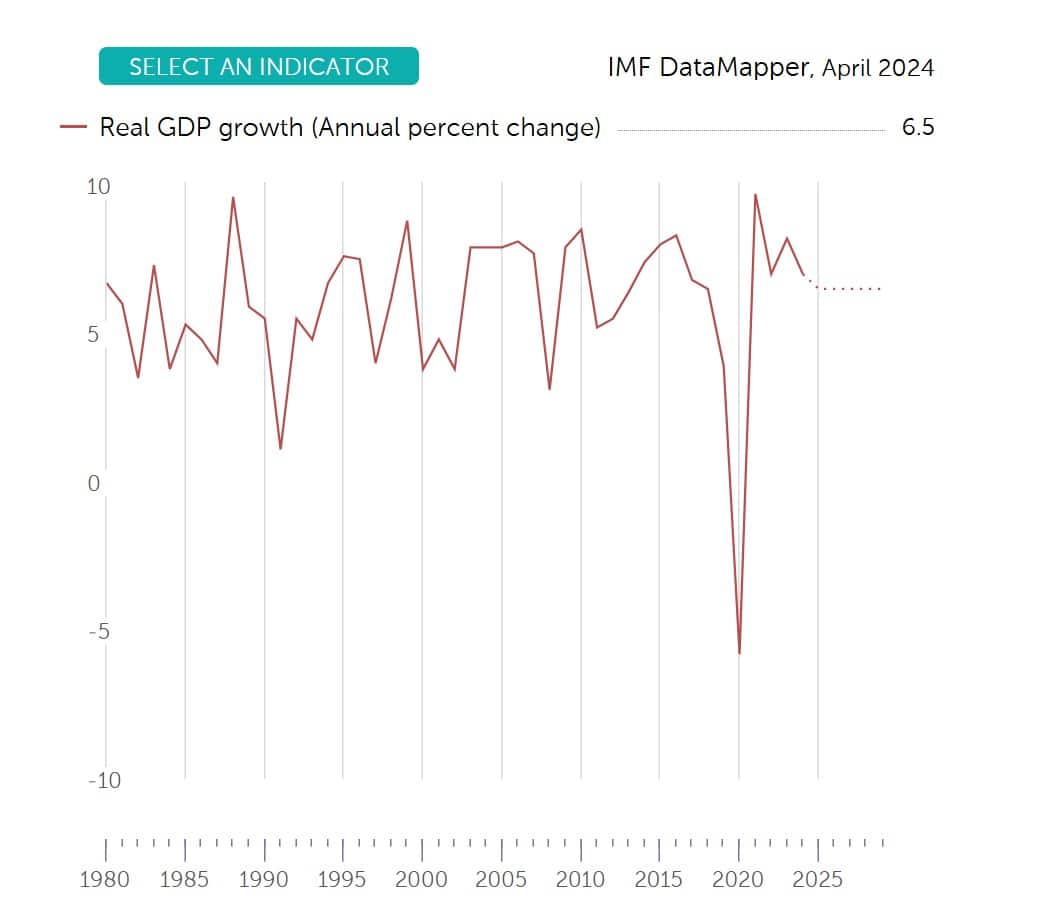India’s GDP has doubled from $2.1 trillion to $4.2 trillion in 10 years, driven by robust reforms, industrial expansion, and digital transformation. With sustained growth, India is set to become the third-largest global economy by 2028.
India's Gross Domestic Product (GDP) has witnessed a remarkable transformation, doubling from $2.1 trillion in 2015 to an estimated $4.2 trillion in 2025.

This extraordinary growth of 103.1% at current prices, as per the International Monetary Fund (IMF), has positioned India as the world’s fifth-largest economy, with projections to surpass Japan by 2026 and become the third-largest by 2028.
Unprecedented growth amid challenges
Despite global economic uncertainties and the severe setback caused by the COVID-19 pandemic, India has sustained robust growth. Among the top 10 largest economies, India’s GDP expansion has outpaced its peers, including the United States (66% growth), China (76%), and Germany (44%).

Also read:India doubles GDP to $4.3 trillion in a decade, fastest among major economies
Key drivers behind India's economic expansion
Experts attribute India's GDP doubling to a combination of government policies, strong industrial and service sectors, and major economic reforms. Here are the core contributors:
Manufacturing & Infrastructure Push: Policies like Make in India and the Production-Linked Incentive (PLI) scheme have boosted domestic production and exports. Capital expenditure in infrastructure has further fueled growth.
Agricultural Resilience: Despite erratic climate conditions, agricultural productivity has remained stable, supporting rural incomes and demand.
Technological Advancements: Digital transformation, including the rise of fintech and e-commerce, has increased efficiency, reduced costs, and expanded the market economy.
Financial & Banking Reforms: The Reserve Bank of India (RBI) has strengthened the banking sector, ensuring a resilient credit system that facilitates investment and entrepreneurship.
GST & Fiscal Prudence: The introduction of the Goods and Services Tax (GST) has improved tax compliance, while disciplined fiscal policies have enabled increased capital spending.
Service Sector Boom: IT, logistics, and retail have flourished, contributing significantly to economic expansion.
Foreign Investments: A surge in Foreign Direct Investment (FDI) has supplemented domestic capital, enhancing India's industrial and technological landscape.
Also read: Indian Economy doubles in 10 years: Look at top 10 global economies
According to IMF projections, India’s GDP is set to reach $5.7 trillion by 2028 and $6.3 trillion by 2029, closing the gap with the world’s largest economies.
India's growth projection is 6.5% for 2026 based on calendar year.
While global headwinds, including potential trade barriers and geopolitical tensions, pose challenges, India’s strong economic fundamentals, sustained policy focus, and burgeoning middle class provide optimism for continued growth.
